Copyright © 2013 by Wayne Stegall
Created December 6, 2013. See Document History at end for
details.
Room Effect and Speaker Alignment
Introduction
I have long held the opinion that a sealed-box speaker would outperform
a ported design on technical merits pertaining to lower phase shift in
the deep bass. More recently I began to question whether the
phase effects of the room effect would drown out the phase differences
of the two vindicating the recent trend toward dominance of ported
speakers.
Anechoic response
If comparable speakers of each type were analyzed without alteration of
the room effect,
figures 1-4
below would show the sealed-box speaker a clear winner regarding phase
response. Both were calculated for a 40Hz cutoff at -3dB with a
1dB Chebychev alignment. At the 40Hz cutoff the sealed-box
phase shift is 109.789º; that for the ported design is 256.208º.
Figures 1 and
2: Bode and phase plots for a sealed box speaker with a 40Hz
cutoff and a 1dB ripple Chebychev alignment.
|
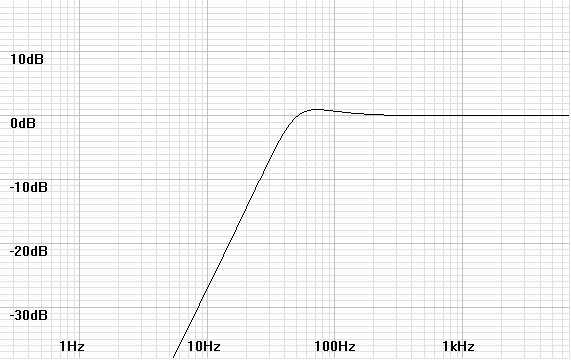
|
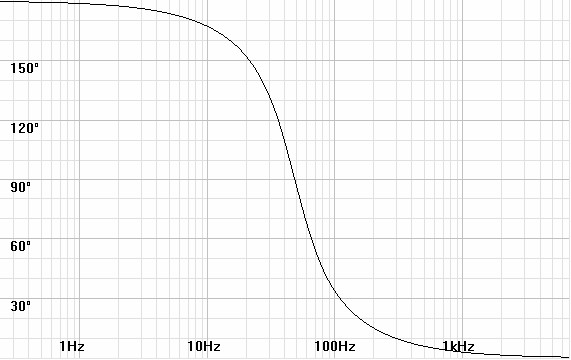
|
Figures 3 and 4: Bode and phase plots for a ported speaker with a
40Hz cutoff and a 1dB ripple Chebychev alignment.
|
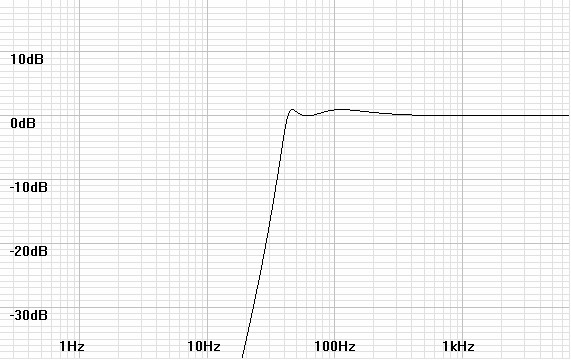
|
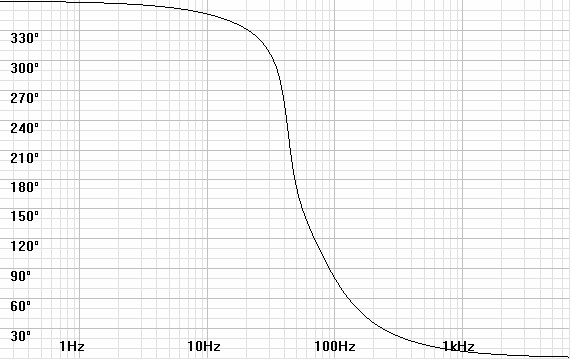
|
The room effect complicates analysis
Placing the same speakers in an actual live room greatly alters their
response because standing waves create resonances at fundamentals and
harmonics related to room dimensions. The result of adding a
signal back to itself after bouncing off two parallel walls produces a
comb filter response where the signal doubles at resonant frequency and
its harmonics and cancels at intermediate frequencies while the phase
goes from -90 to +90 and then abruptly back repeated at the same
interval as the magnitude response. This effect ends as the
frequencies rise to where they are absorbed by the room rather than
reflecting between the walls, in these plots depicted to occur at
500Hz. (
figures 5 and 6)
Note: All room effects shown
are worst case: against a reflecting wall for one-dimensional
cases and in a corner for three-dimensional ones. Actual
responses out into listening room will be better and will vary.
| Figures 5 and
6: Bode and phase plots for a hypothetical one-dimensional room
effect between two parallel walls spaced 18ft apart. |
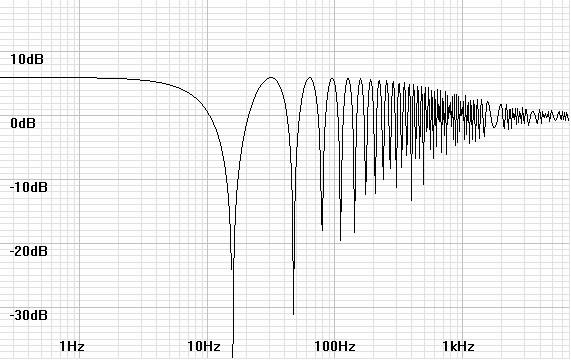
|
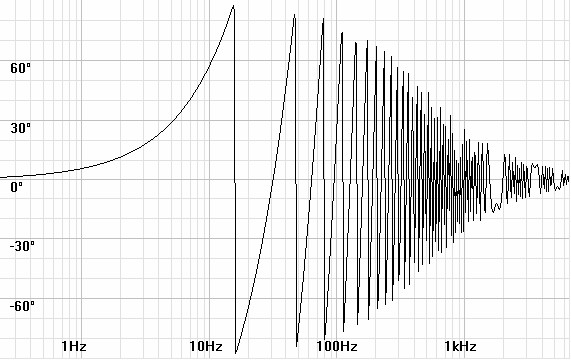
|
If the room effect along one dimension is bad enough, the effect occurs
in three dimensions for most typical box-shaped rooms. The
response then is of three comb filters at different fundamental
frequencies combining into a more chopped up frequency response as
shown in
figures 7 and 8
below.
| Figures 7 and
8: Bode and phase plots for a hypothetical three-dimensional room
effect for a room 18' x 12' x 8' |
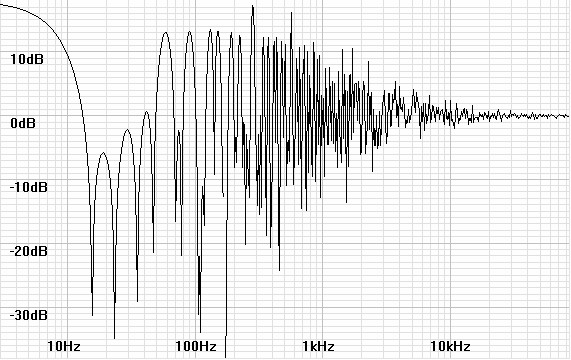
|
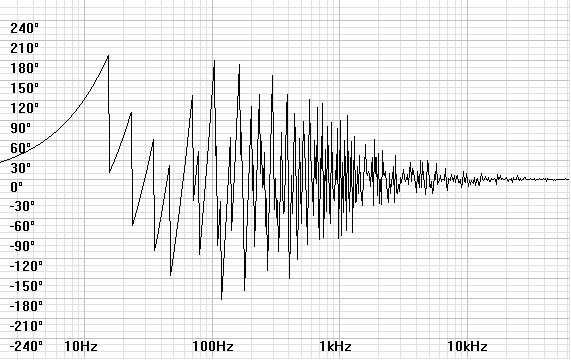
|
Speaker response with room effect
The following plots superimpose a one-dimensional room effect on each
type of speaker. Even with the ±90º phase variation of the
one-dimensional room effect added to the speaker responses there is
still a seeming difference favoring the seal-box design. Even if
the difference between the two is clouded by room resonance, there may
still be a subjectively audible difference to be heard. Also, it
is possible that the human auditory system may hear the correct speaker
response in spite of the room effect, reading the room effect only as
the ambience of the listening space. The use of comb filters to
create simulated stereo from mono and the perception of missing
fundamentals in small speakers when the second and third harmonics are
present seem to support this concept.
| Figures 9 and 10: Bode and phase
plots for the sealed box speaker with one-dimensional room effect. |
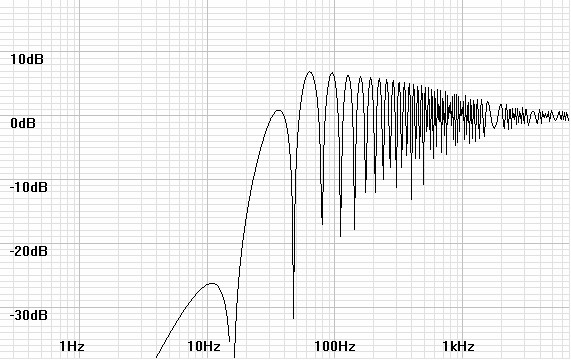
|
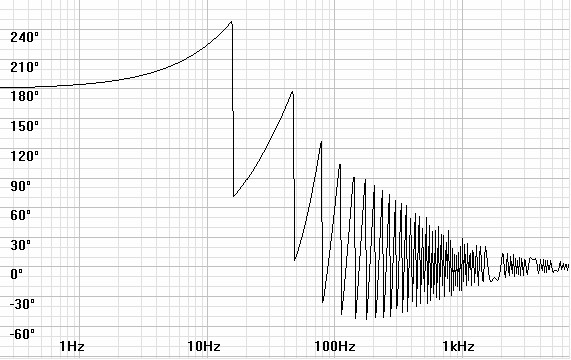
|
Figures 11 and 12: Bode
and phase plots for the ported speaker with one-dimensional room effect.
|
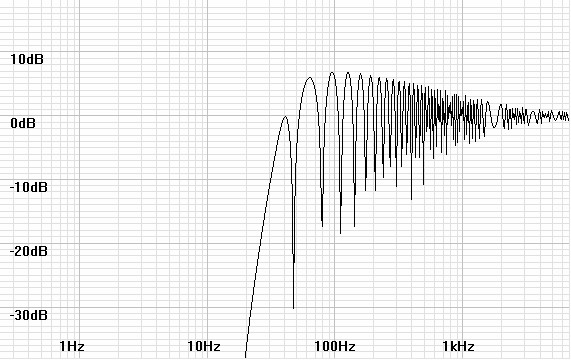
|
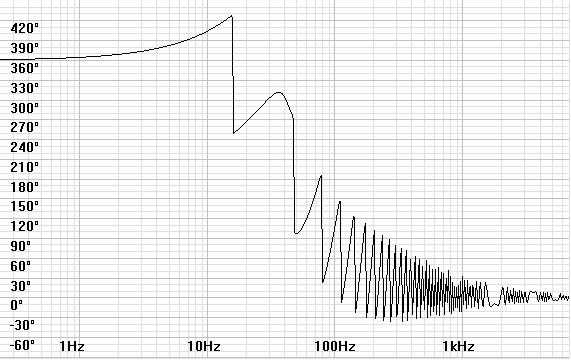
|
Direct Coupling
An additional room effect that can distinguish the sealed-port speaker
from the ported one might be called direct coupling. Allegedly,
below the lowest resonance frequency of the room a sealed-port speaker
pressurizes the room as a whole instead of creating waves. If the
resonance frequency of the speaker is matched to be equal to or lower
than that of the room the sealed-box response will not end below its
resonance frequency but continue down short of DC. This is the
same effect that allows closed-back headphones to have frequency
response down to low frequencies in spite of small dimensions that
would limit bass response. Direct coupling, however, works
against ported speakers. In ported speakers, direct coupling only
serves to couple the woofer to its port cancelling signals below the
port resonance frequency.
Where length is the longest dimension of room, f
0 is the
resonant frequency of the speaker, and c is the velocity of sound in
compatible units (1132ft/sec), the following equation related the
condition for direct coupling of a sealed-box speaker to a room.
Figure
5: Sealed-box speaker matched for direct coupling would
simply show frequency response of room effect
|
Figure
11: Not benefiting from direct coupling, the ported speaker would
show the predicted combined room-speaker response already plotted.
|

|

|
Personal Note
For 17 years I had my sealed-box speakers in a room optimally matched
to them for direct coupling and did not know it. Ironically, I
was devising how to equalize them to extend down to 20Hz when I likely
already had the response I desired.
Figures 13 and 14
show the calculated response of room involved and therefore likely also
of the speakers in it. The room effect notches would have
been unavoidable in any case and been mitigated by listening out into
the room rather than at the reverberation boundaries.
Figures 13 and 14: One and
three-dimensional room effect plots calculated for the room that I long
played my sealed-box speakers.
|
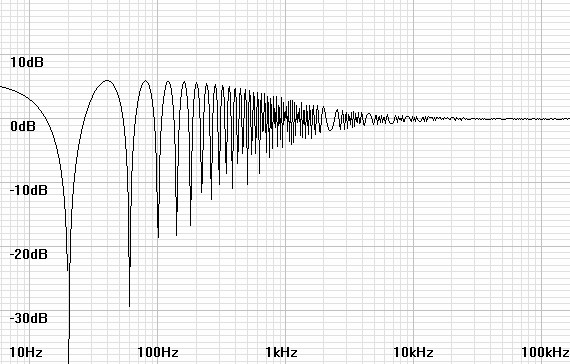
|
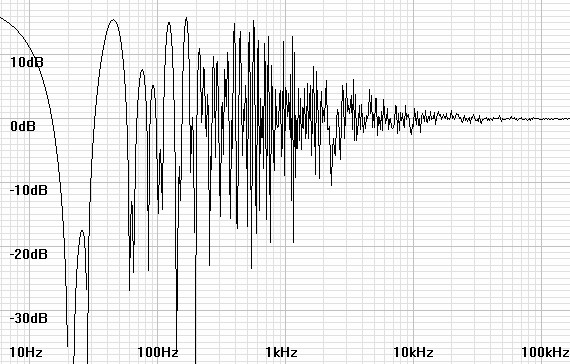
|
Document History
December 6, 2013 Created.
















